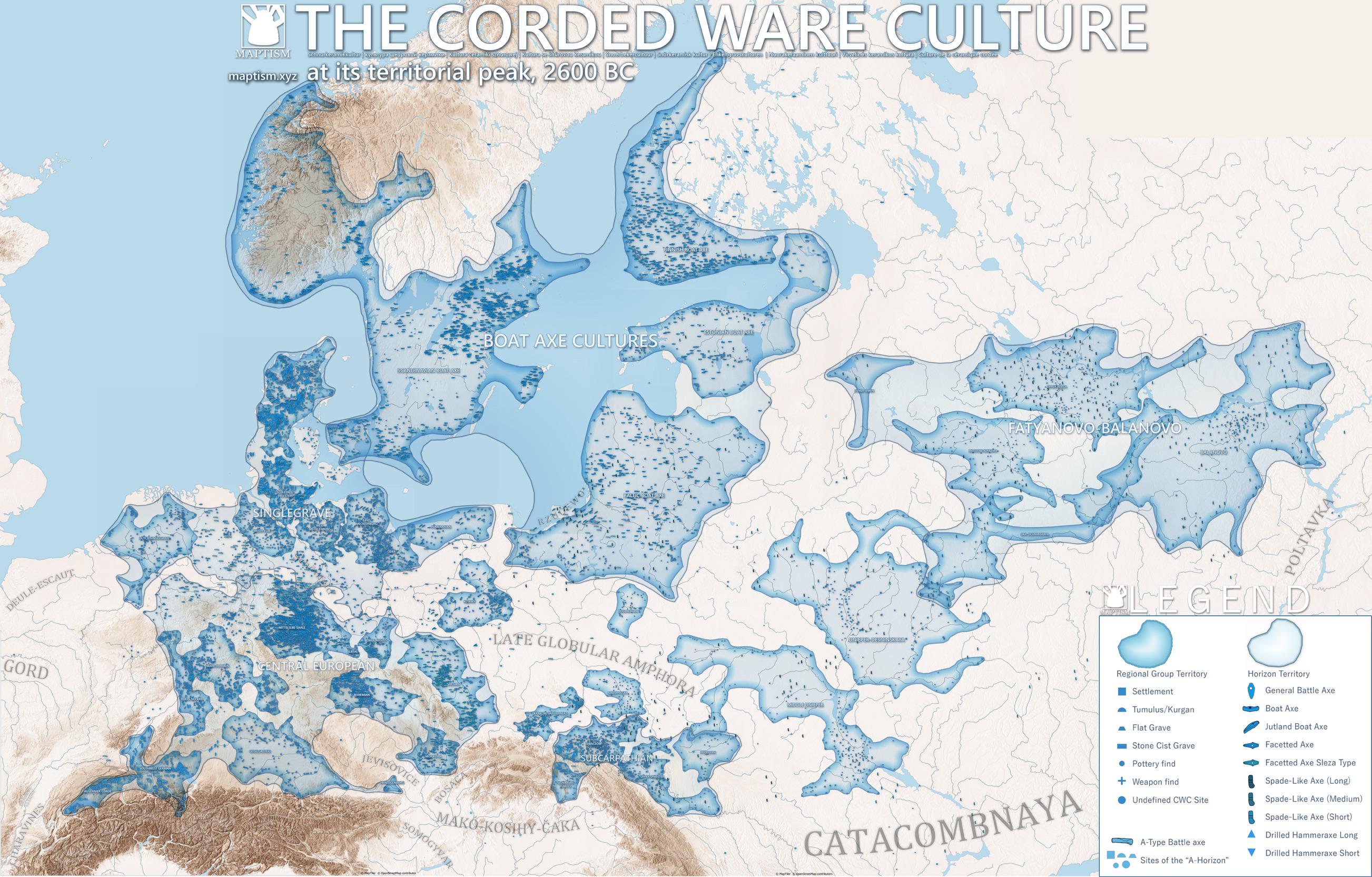Map of the Corded Ware Culture Circa 2600 BC


Marcus Rodriguez
Historical Geography Expert
Marcus Rodriguez specializes in historical cartography and geographic data analysis. With a background in both history and geography, he brings unique...
Geographic Analysis
What This Map Shows
The "Map of the Corded Ware Culture (Circa 2600 BC)" depicts the expansive territory of one of the most influential prehistoric cultures in Europe. This visualization highlights the geographic spread of the Corded Ware people, who are known for their distinctive pottery characterized by cord impressions and their burial mounds, or kurgans. The map illustrates how this culture thrived across vast regions, from the steppes of Eastern Europe to parts of Central and Northern Europe.
Transitioning from the visual representation, we delve into the Corded Ware Culture itself, exploring its origins, lifestyle, and significance in the greater context of European prehistory.
Deep Dive into the Corded Ware Culture
The Corded Ware Culture emerged around 2900 BC and flourished until approximately 2200 BC, marking a significant period in the transition from the Neolithic to the Bronze Age. This culture is primarily recognized for its unique pottery style and burial practices but also for its role in the spread of new technologies and social structures in prehistoric Europe. What's fascinating is that the Corded Ware people were not a singular ethnic group but rather a network of communities sharing similar cultural traits.
The hallmark of Corded Ware pottery is its intricate corded designs, which were created by impressing cords into the wet clay before firing. This pottery was not just functional; it was also a symbol of identity and status. Archaeological finds suggest that these vessels were used for both cooking and ceremonial purposes, indicating a rich cultural life.
In terms of subsistence, the Corded Ware people practiced a mixed economy. They were primarily pastoralists, herding cattle, sheep, and goats, but they also engaged in agriculture, growing crops like barley and wheat. This dual approach allowed them to thrive in various environments, which is evident in the map’s depiction of their spread across diverse landscapes, from fertile river valleys to harsher terrains.
Interestingly, the Corded Ware Culture is often linked to the spread of Indo-European languages across Europe. As these people migrated and interacted with local populations, they likely facilitated not only the exchange of goods but also ideas and languages. This cultural diffusion was instrumental in shaping the social and linguistic landscape of Europe.
Regional Analysis
The map reveals distinct regions where the Corded Ware Culture had a strong presence. In Eastern Europe, particularly in modern-day Ukraine and Poland, archaeological sites have yielded numerous burial mounds, indicating a rich tradition of ancestral veneration. These kurgans were often filled with grave goods, showcasing the wealth and status of the individuals buried within.
Moving westward, we find evidence of Corded Ware influence in regions like Germany and the Netherlands. Here, the culture interacted with other Neolithic communities, leading to a blending of traditions. For instance, while the Corded Ware people favored kurgans, neighboring cultures often employed flat graves, indicating a fascinating interplay of customs.
In Scandinavia, the Corded Ware Culture took on unique characteristics, adapting to local environments and integrating with existing societies. The presence of similar pottery styles and burial practices suggests that cultural exchange was vibrant and multifaceted.
Significance and Impact
Understanding the Corded Ware Culture is crucial not only for its archaeological significance but also for its long-term impacts on European history. This culture is often viewed as a bridge between the Neolithic and the Bronze Age, marking a period of significant technological advancement and social transformation.
The innovations brought by the Corded Ware people—such as the introduction of metalworking and new agricultural techniques—set the stage for future civilizations in Europe. As these communities evolved, they laid the groundwork for the rise of complex societies that would dominate the continent for millennia to come.
Today, the legacy of the Corded Ware Culture can still be felt in modern European societies. The languages spoken and the cultural practices observed in various regions may trace their roots back to this dynamic cultural group. As we continue to explore and understand our past through maps and archaeological studies, the Corded Ware Culture remains a fascinating chapter in the story of human civilization, one that underscores the interconnectedness of cultures and the ways in which they shape our world today.
Visualization Details
- Published
- September 18, 2025
- Views
- 58
Comments
Loading comments...